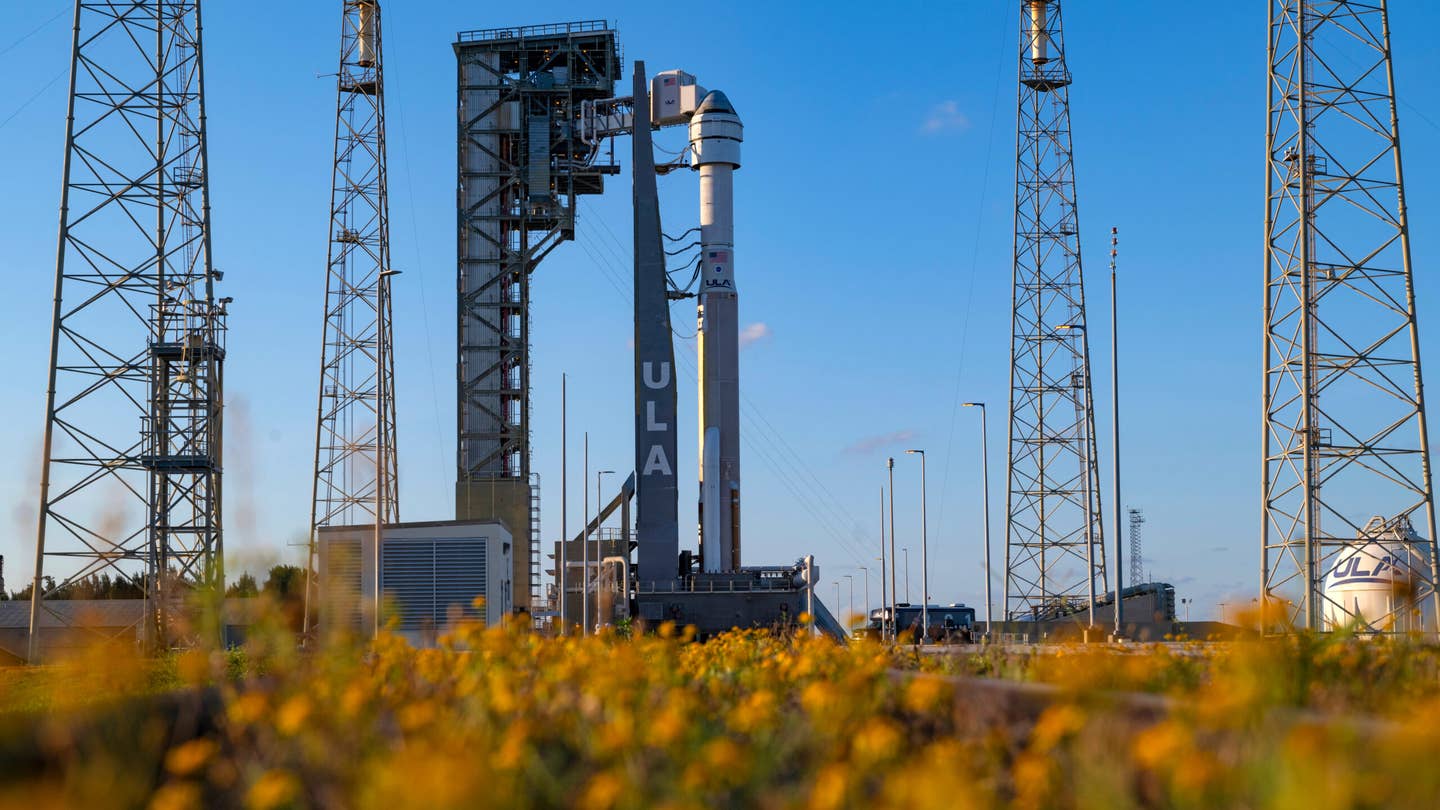New Starliner Launch Target Identified After Setback
The semireusable space capsule has a new launch target after yet another issue postponed its first crewed flight to Wednesday at the earliest.

Boeing’s Starliner, stacked atop ULA’s Atlas V rocket, stands on the pad at Space Launch Complex-41 at Cape Canaveral Space Force Station in Florida prior to Saturday’s scrubbed CFT attempt. [Courtesy: United Launch Alliance]
The inaugural crewed flight test (CFT) of Boeing’s Starliner capsule—a reusable vessel to the International Space Station (ISS) under a multibillion-dollar contract with NASA for six missions—was scrubbed over the weekend after a new problem arose during the launch countdown.
The mission, which has faced a series of setbacks since an initial launch attempt was scrubbed on May 6, is now targeted for 10:52 a.m. EDT on Wednesday, with a backup launch window available Thursday.
The Starliner CFT is intended to be the spacecraft’s final test flight before NASA moves to certify it for service missions to the ISS, the first of which could take place next year. To date, all eight Commercial Crew rotation missions to the orbital laboratory have been flown by SpaceX’s Crew Dragon.
The company signed its own multibillion-dollar contract with the space agency at the same time as Boeing but has already cemented itself as an invaluable partner. The same cannot be said for the aerospace giant, which has flown Starliner to the ISS just once.
CFT launch attempts have been delayed or scrubbed due to a litany of issues. First, it was a faulty pressure regulation valve on United Launch Alliance’s (ULA) Atlas V launch vehicle, which will carry Starliner into orbit. Then, crews discovered a small helium leak on Starliner itself, involving one of the 28 reaction control system thrusters on its service module. These small engines use helium to make minor maneuvers and keep Starliner in orbit.
NASA and Boeing have since described the leak as stable but have opted not to repair it, which would require Starliner to be unstacked from Atlas V and could take months. However, in investigating the root cause of the leak, crews discovered what the space agency described as a “design vulnerability” in the capsule’s propulsion system.
In a scenario NASA estimates has a likelihood of about 0.77 percent, the original leak could combine with an adjacent leak to prevent Starliner from performing a deorbit burn. That’s the maneuver that returns a spacecraft to Earth’s atmosphere following its mission.
All of this work identifying and assessing risk pushed the CFT back to Saturday. But yet another problem forced a cancellation of the launch just a few minutes before takeoff—and made a second go-around on Sunday infeasible.
According to the Starliner team, the issue is again on ULA’s side of things.
During the countdown, ground support equipment on the pad at Space Launch Complex-41 at Cape Canaveral Space Force Station in Florida experienced issues, which crews traced to a power supply unit on one of three chassis on Atlas V’s Centaur upper stage. The power supply unit indirectly powers Centaur’s topping valves during the launch sequence, and all three chassis must be running in order for the countdown to be completed.
According to Tory Bruno, CEO of ULA, the chassis with the faulty power unit was quickly replaced. The new equipment has been retested and was functioning normally as of Sunday. NASA and Boeing added that they did not observe any physical damage to Starliner or Atlas V, and crews will perform a “full failure analysis” to determine what went wrong.
NASA astronauts Butch Wilmore and Suni Williams, Starliner’s first human passengers, remain in quarantine at Kennedy Space Center. If all goes according to plan, Wilmore and Williams will dock with the ISS later this week. There, they will spend about one week performing tests of Starliner’s systems as NASA prepares for the program’s next step: certification.
After that, Starliner would begin alternating six-month Commercial Crew rotation missions with SpaceX’s Dragon.
Like this story? We think you'll also like the Future of FLYING newsletter sent every Thursday afternoon. Sign up now.

Sign-up for newsletters & special offers!
Get the latest FLYING stories & special offers delivered directly to your inbox






